Europe Trip 2012: Part 7 - Paris
It will be 2014 by the time I complete this blog post series. Anyway…. The rail journey from Grindelwald to Paris wasn’t quite as spectacular as from Venice to Grindelwald, but it was still a great way to travel. This time we caught a German Deutsche Bahn inter-city train. It ticked all the boxes - fast, on-time, clean, laptop charging points, well-stocked buffet, etc. Sometimes I sit and imagine I’m on that train now when I travel to work with Queensland Rail. Unfortunately my imagination isn’t that great. The smell of stale piss, muscle cramps from lack of room, and shivering from the air-conditioning being cranked up to −5 degrees usually snaps me out of that little daydream.
We arrived at Paris Gare Lyon station mid-afternoon and caught a taxi to our hotel. We had booked to stay in the hotel Adagio Paris Tour Eiffel, which was only a short distance walk from the Eiffel Tower. The hotel itself was fine, nothing special. We had a partial view of the Eiffel Tower which looks spectacular at night when lit up.
I had a full itinerary planned for Paris. I had already purchased the Paris Combo Pass which included use of public transport and access to the Louvre Museum. As we arrived in Paris though it was looking increasingly like I’d be experiencing Paris on my own. The trip up to the freezing conditions at Jungfraujoch the day before had took its toll on Rach and she was now even worse.
I had planned to start doing touristy stuff as soon as we arrived but it was clear that Rach was going nowhere. So instead we had a walk to a local supermarket, picked up some food and wine, and spent the evening in the apartment. Walking around the supermarket in Paris further re-affirmed how bad the supermarkets in Australia are. ¢1.99 for quite a decent bottle of Bordeaux. Paris was quickly becoming one of my favourite places!
After a good night’s rest I set off early on Saturday morning to begin my sightseeing. For the first time on the trip I was on my own. Rach was confined to her death bed and Lauren decided she would rather stay in the apartment than traipse around museums with me.
I hopped on a local bus and made my way over to the Louvre. I’d timed it right. If I’d have gone to the Louvre on the Sunday morning I could have got in free (the first Sunday of the month is always free entry). Whenever I see the word Free it immediately conjures up one image - Queues. This was my first time in Paris and I would happily pay to avoid standing in queues to get access to what is the most visited tourist attraction in the world. I had no desire to spend half a morning in a queue like I did with Rach when we visited the Vatican museum during our weekend away to Rome a few years ago.
I arrived at the Louvre just after opening time at 9am, and was amazed to find no queues - I walked straight in. Already armed with my Rick Steves audio guide I made my way to the Denon Wing. I could have spent the entire weekend in the Louvre and not seen everything, such is the size and scope of the Louvre, so I’d already decided to limit myself to the highlights.
The Louvre is the oldest and largest museum in Europe. It’s actually a 16th-Century palace arranged in a U-shape, and now adorned with a glass pyramid - a landmark for fans of The Da Vinci Code.
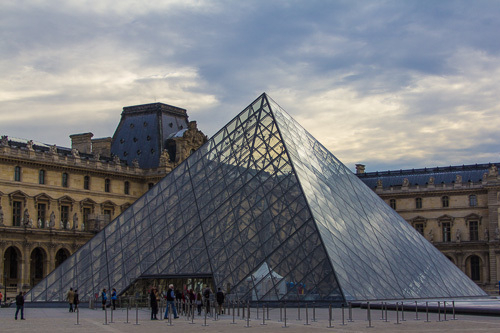
The building itself is beautiful - a fitting home for some of the world’s most celebrated and important works of art.
My tour of the Denon Wing started in Ancient Greece. I was greeted by the Venus de Milo and the Winged Victory of Samothrace. I was also greeted by a hundred snap-happy Japanese tourists, all with matching baseball caps.
I meandered through the Gallery of Statues (far too many statues of naked Greek people to mention) and gazed upon the Parthenon Friezes - slabs of decorated stone that once decorated the exterior of the 5th Century B.C. Parthenon. It struck me that I once visited the relics of the Parthenon in Athens while I was in the Navy and was utterly bored by the occasion, yet this time i was fascinated by a few slabs of stone from it. How times had changed. To think all the places I visited in the Navy and never really saw anything because I was young, stupid and only interested in seeing the bottom of a beer glass.

From Ancient Greece I travelled to 18th Century France in the Apollo Gallery - home to the crown jewels of Louis XV, Louis XVI and Napoleon.
After a quick diversion past religious artwork from medieval Europe brought me to the Grand Gallery, home to famous pieces by Botticelli, Raphael, Michelangelo and of course, Leonardo Da Vinci.
I doubt I’m alone in thinking that the Mona Lisa is perhaps the least spectacular piece of work in the Grand Gallery. Some of the other pieces are truly spectacular in scale and beauty, such as The Marriage at Cana by Paulo Veronese and the Winged Victory by Delacroix.
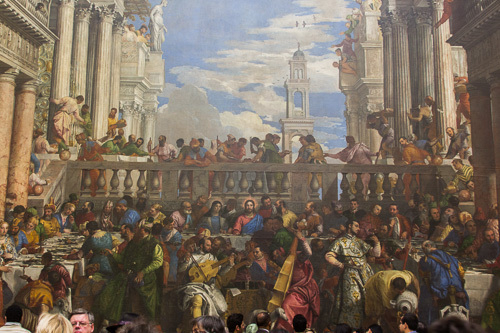
After seeing those it was a bit of a disappointment to finally make it to La Joconde (Mona Lisa). The painting is quite small, dark and protected behind a glass wall which is forever reflecting a hundred camera flashes, meaning that you have to get right up to the glass to view her properly, and to do that you have to battle your way past a thousand Asian tourists. It amazed me how many tourists (you know the ones I’m talking about) would finally get to the front of the queue, look at the Mona Lisa through the viewfinder of their camera, take the photo, and then walk away without actually ever viewing her with their naked retina. Unbelievable!
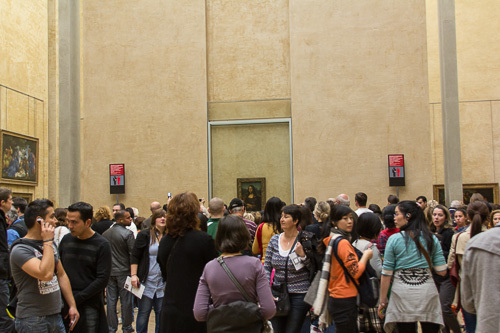
I spent perhaps another hour in the Denon Wing but it was getting far too busy for my liking so I said goodbye to the Louvre and set off on foot to the next stop on my itinerary.
After a quick detour to a nearby cafe with free wi-fi, I walked down the river Seine to do the Historic Paris walking tour in the centre of Paris. Actually, the self-guided tour did in fact start at not just the centre of Paris, but the centre of France - Point Zero - this point from which all distances in France are measured.
The Île de la Cité is an island in the Seine River that is the original birthplace of Paris, and is home to the Notre Dame Cathedral.
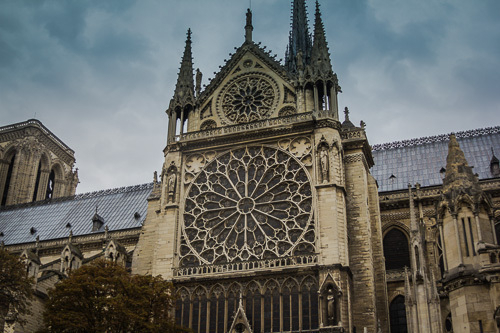
The island was fairly busy; as well as the usual throng of tourists to see the historic sights there was some kind of Emergency Services open-day on. The police, fire service, bomb detection squad and others were all set up displaying their kit.
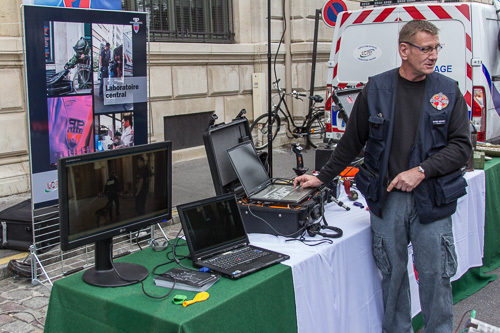
After a wander around the exterior of the Notre Dame I considered my options. I really wanted to go in and have a look around but the queue to get in was absolutely enormous. It had started raining but that seemed to have no effect on the size of the queue.
I decided to miss out this time and instead went to the side entrance to join the smaller queue to get up to the top of the bell tower.
I’m glad I did. Despite the awful weather I got to see some great Gargoyle-eye views of Paris.

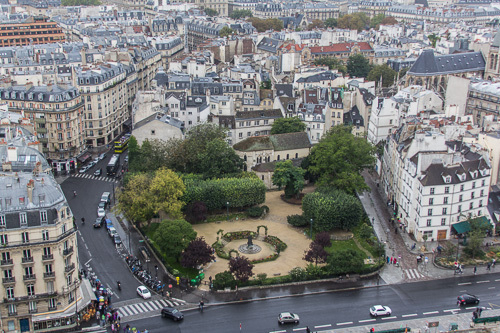
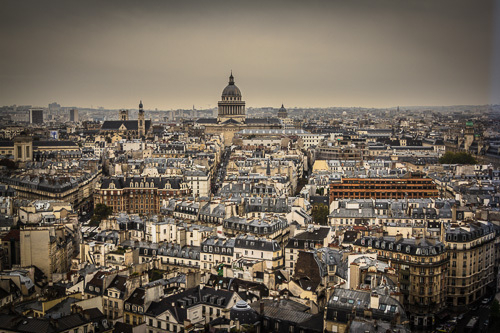
After a further wander around Île de la Cité, including a look at the bird-shit spattered statue of Charlemagne, I walked across a love-lock infested bridge to find the nearest Metro station.
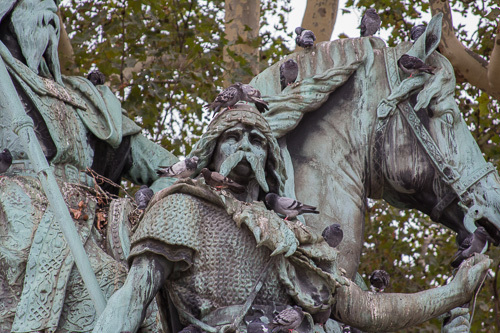

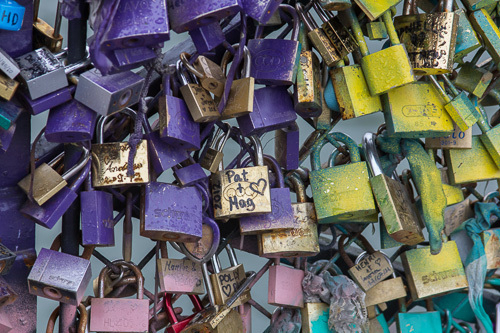
It was now late afternoon and I was tired, wet and hungry.
By the time I got back to the apartment Rach was looking a little bit better so she braved a venture out with Lauren and I for food. The original plan was for some fine French dining but Rach was in no condition for that so we walked to the nearest brasserie that would let us in without a table booking.
The following day had a fully packed itinerary. This time Rach and Lauren came out with me. Rach still looked like death so I new she wouldn’t be able to last long. We walked over to the Eiffel Tower - about a 15 min walk from our hotel with the intention of going up it. One look at the queue however and that plan quickly went out the window.
Instead, we walked across the river to place du Trocadèro, perhaps the best place in Paris to get photos of the Eiffel Tower. It’s at this point that Rach realised there was no way she was going to be able to spend the day walking around Paris so she headed back to the apartment. I asked Lauren if she wanted to stay with me but she chose to return to the apartment as well - she’s not a walker. When we talk about it now she regrets that decision - particularly when I show here photos of everything she missed.
Tripod and camera in hand I set up shop to try and get some decent pics.
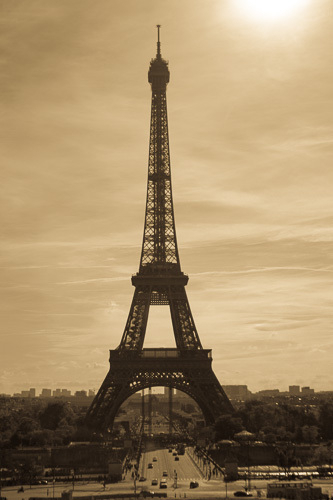
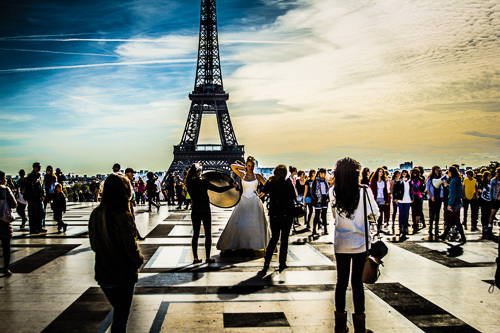
After the Eiffel Tower the next step on my itinerary was the Arc de Triomphe. I took the metro directly from Place du Trocadèro to the Arc de Triomphe which is at the top of the Champs-Elysée.
I joined a short queue and paid to climb the 284 steps up the spiral staircase to the top of the Arc de Triomphe. My knees were taking a pounding by this point - still aching from the climb to the top of the Notre Dame bell tower the day before.
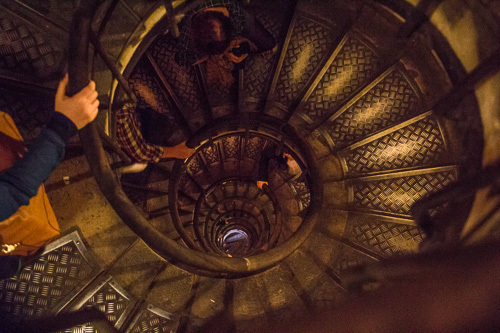
Before you climb out onto the roof of the Arc de Triomphe there’s the obligatory gift shop and a small mezzanine area with exhibits explaining the history of the monument, which has played a pivotal role in French history. I could picture 1940 and the Nazis goose-stepping down the Champs-Elysées and under the Arc du Triomphe which was blazoned with a huge swastika.
The view from the top is spectacular in all directions. Apparently Paris is roughly the same size has all the parks in London combined. Fill this with 11 million people and you can see why Paris has the highest population density of any city in Europe.
In every direction you can see an iconic part of Paris. Looking east you can gaze straight down the Champs-Elysées to the Tuileries Garden and the Louvre. Further to the left and in the distance is the white dome of Sacré-Coeur. To the right in the distance is the Notre-Dame.
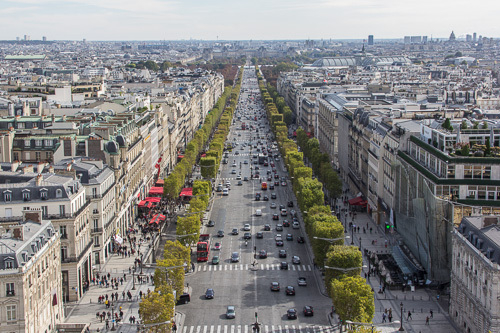
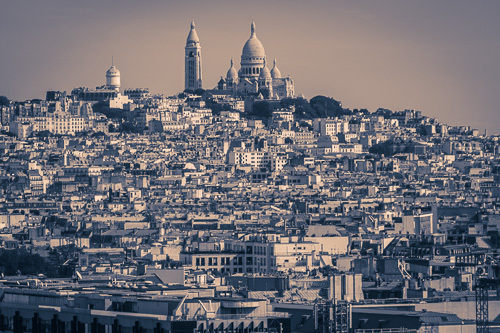
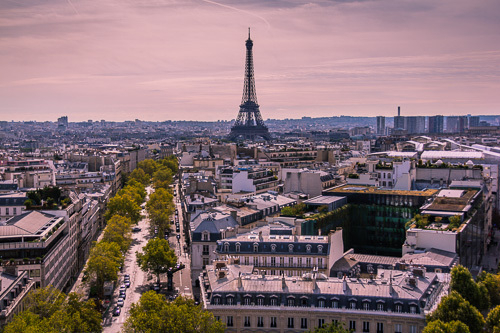
Looking west you can see the huge, rectangular Grande Arche de la Défense amongst a few skyscrapers.
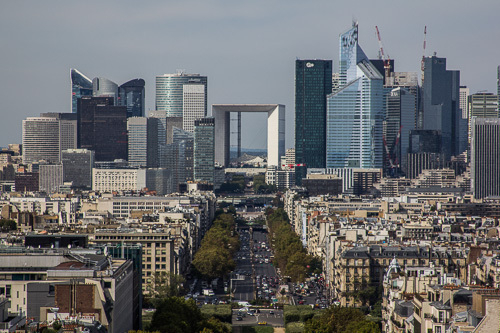
Looking down you can see that the Arc de Triomphe sits at the intersection of 12 boulevards, a masterpiece of city planning by Baron Haussmann. At this time on a Sunday morning the roads weren’t too busy but you could image the chaos of this area on a Friday afternoon.
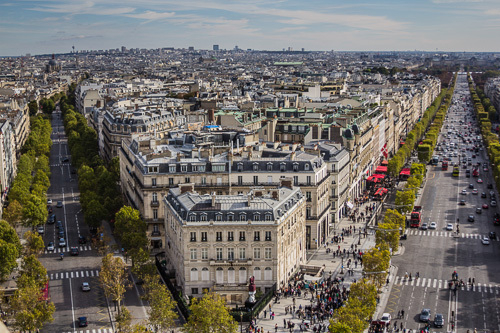
The climb back down the Arc de Triomphe brought me out directly underneath to see the Tomb of the Unknown Soldier.
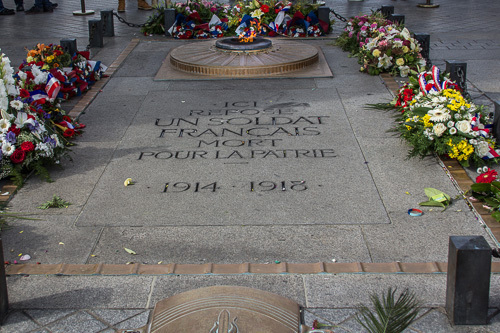
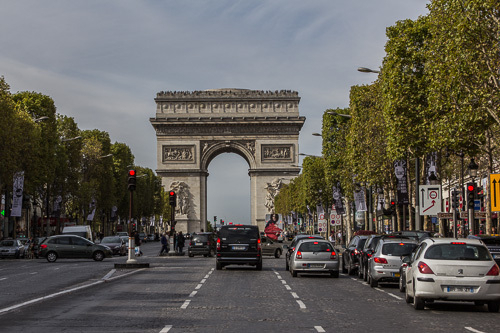
I took a steady walk down the Champs-Elysées stopping a number of times to check out some of the glitzy stores. Amongst them were flagship stores for Peugeot and Mercedez-Benz which were more like museums than car showrooms.
Further down the Champs-Elysées brought me to the beautiful Grand and Petit Palais exhibition halls, adjacent to statues of Charles de Gaulle and Winston Churchill.

From here it was a short walk down the tree-lined avenue to Place de la Concorde.
During the French Revolution, Place de la Concorde was home to a guillotine. Now the most famous structure is the 3,300-year-old obelisk of Luxor which sits directly over the spot where Louis XVI and 2779 others were beheaded. When the monarchy was restored in the 1830s after Napoleon, Louis XVI’s brother, Charles X, had the obelisk shipped from Egypt and erected to honour those who had lost their head.
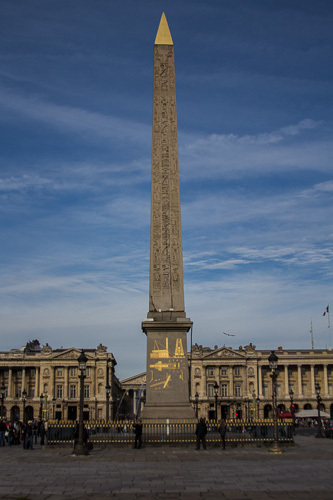
Today the Place de la Concorde is a major tourist trap and great for photos. Another spot popular for wedding pics.

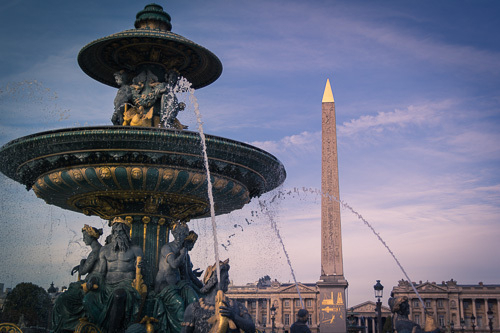
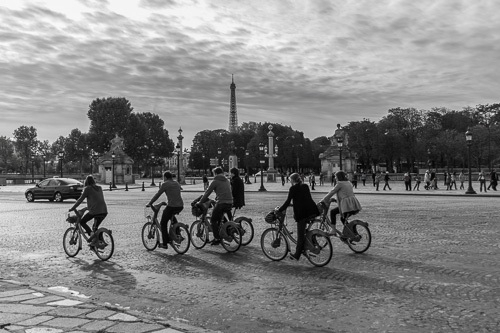
From the Place de la Concorde I walked through the Tuileries Garden. A beautiful place for a Sunday stroll. This is where the Parisians come to relax, play boules and chill out by the pond.
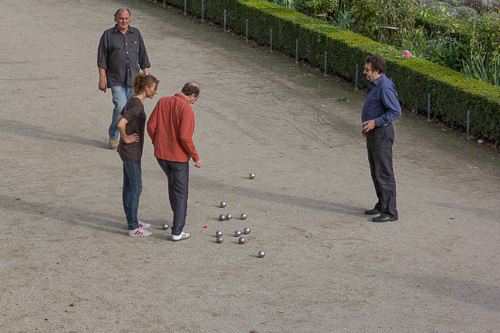
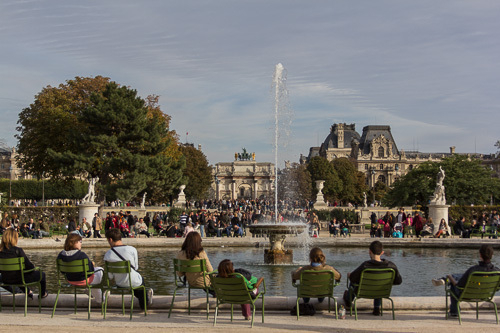
The walk through the Tuileries Garden brought me back to the Louvre.

From here I walked across the river to the Left Bank. By this time it was getting towards late afternoon and I was ready for a little refreshment. Like an oasis in the desert a Scottish pub appeared before me down a side street.
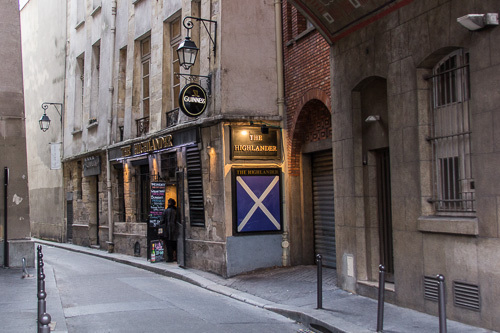
After a swift pint or two I left the pub to take a self-guided tour of the Left Bank area.
The Left Bank is historically famous for great artists and thinkers, and with that my tour began at the statue of Voltaire, the famous writer and philosopher.
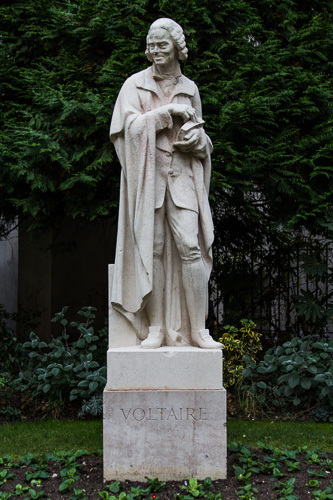
A walk past galleries and boutique stores, all closed, brought me to L’Hotel at 13 rue des Beax-Arts. It was here, on the 30th November 1900, where Oscar Wilde died of an ear-infection, alone in a shabby hotel room after released from prison and rejected by his wife.
Around the corner I came across the house where the German composer Richard Wagner spent the winter of 1841–1842 writing the opera that launched his career - The Flying Dutchmen.
A walk through the square where the painter Eugène Delacroix lived brought me in to the heart of the Left Bank district, home to a great assortment of cafes and restaurants. By this time the evening was setting in and the area was getting busy.
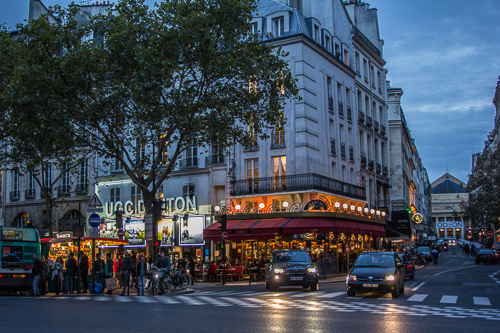
My walk took me past Café le Procope, one of the world’s oldest continuously operating restaurants. Le Procope was founded in 1686 and was one of the first places in Europe where you could get a coffee - recently imported form the Middle East. Apparently, Voltaire was known to drink 30 cups a day here, Benjamin Franking loved to spend hours here recounting war stories from the American Revolution, and a young lieutenant named Napoleon Bonaparte ran up a tab here that he never paid.
Further into the Left Bank brought me to Les Deux Magots Café and Le Café de Flore, famously frequented by such luminaries as Picasso, Sartre, Ernest Hemingway, Oscar Wilde and other ‘free thinkers’ If you’ve seen Woody Allen’s Midnight in Paris you’ll get the idea.

Across from Café de Flore is Brasserie Lipp, the brasserie where Hemingway wrote much of A Farewell to Arms.
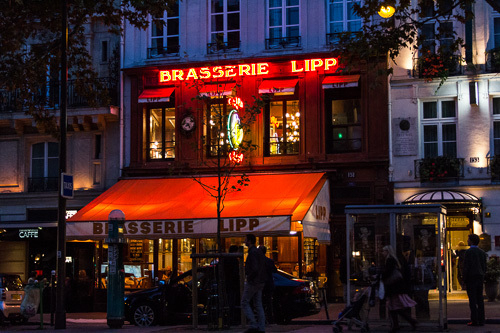
I enjoyed my history tour of the Left Bank but I was getting hungry. I found a Brasserie that didn’t look too busy or too expensive and grabbed a quick bite before heading back to the apartment. Before heading back though I made sure to stop off and buy a bag of Macaroons to take back to Rach and Lauren.
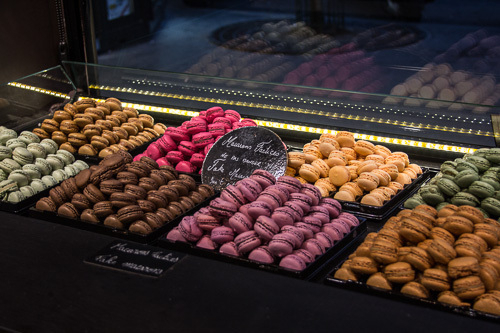
That was the end of a great weekend (for me at least) in Paris. It was only a small taster and one day I hope to return to see more of the City of Light. I just hope next time Rachelle and Lauren will be able to share the experience with me.
The next day we would be catching the Eurostar back to London for one final night in Europe.